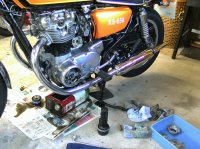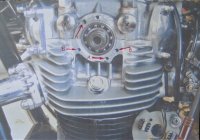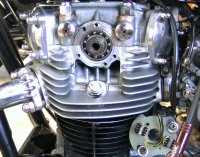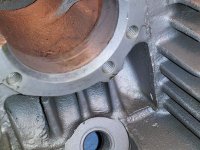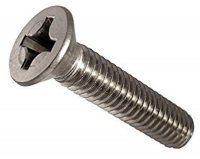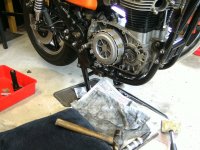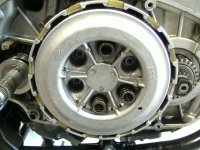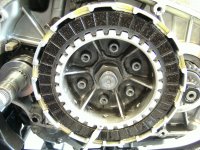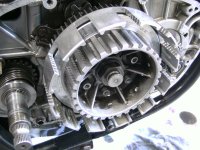Raymondo, regarding clutch slip. I found there to be a very fine line between a good clutch and slipping. Next time you are out riding and the clutch slips just pull over and loosen the clutch off 1/2 - 1 turn at the lever. If the slipping stops then you know the problem is the adjustment. If it keeps slipping slacken off another 1/2 turn. If slipping continues then the issue may be with the worm adjustment or a problem in the clutch plate area.
The XS clutch system suffers from thermal expansion in the clutch push rod area so it is common for people to make small adjustments at the perch depending on how hot the bike is running, or Summer vs Winter conditions.
With the worm adjustment you need to be backing off the screw a bit. I have used the spec 1/4 turn and also 1/8 turn and both have been fine. If you do not back the screw off a little then the thermal expansion will start to activate the clutch and give slip.
Good luck.
The XS clutch system suffers from thermal expansion in the clutch push rod area so it is common for people to make small adjustments at the perch depending on how hot the bike is running, or Summer vs Winter conditions.
With the worm adjustment you need to be backing off the screw a bit. I have used the spec 1/4 turn and also 1/8 turn and both have been fine. If you do not back the screw off a little then the thermal expansion will start to activate the clutch and give slip.
Good luck.




